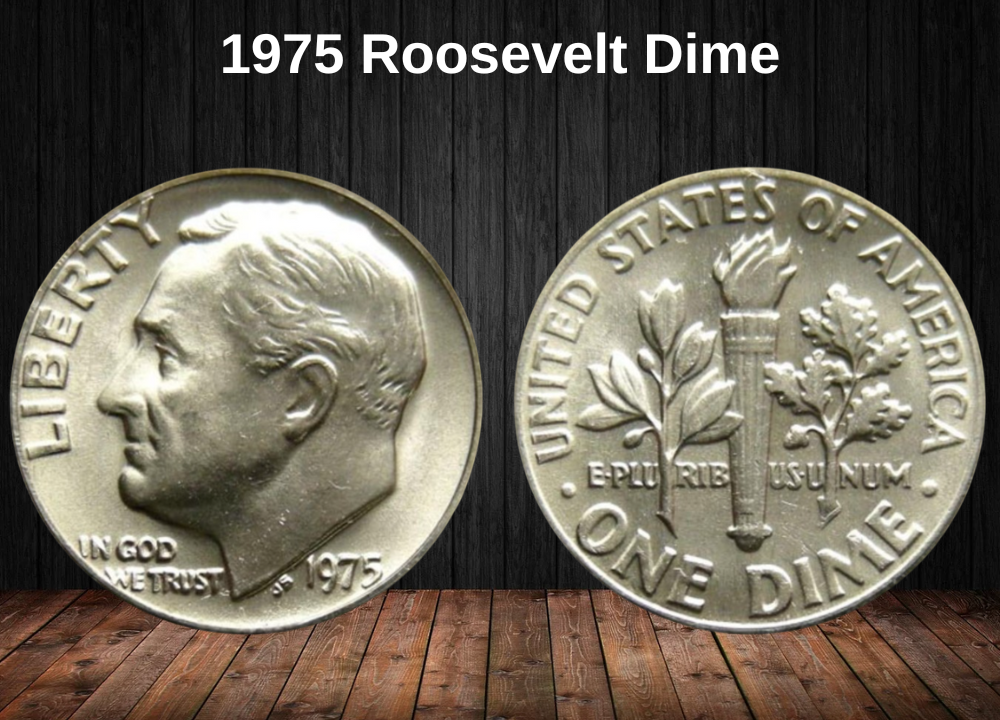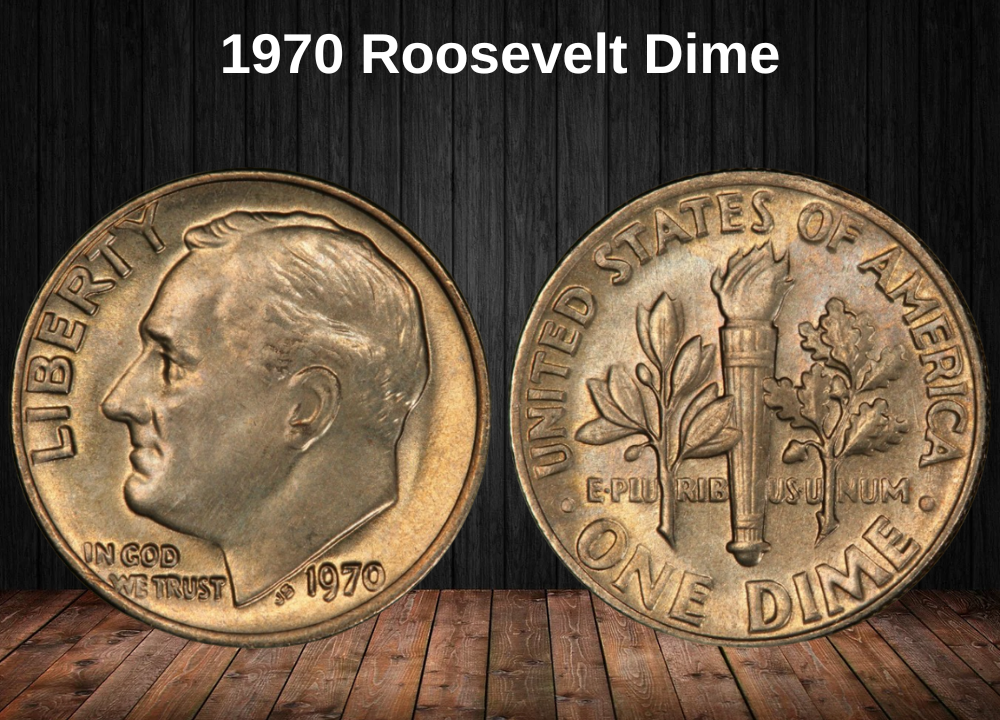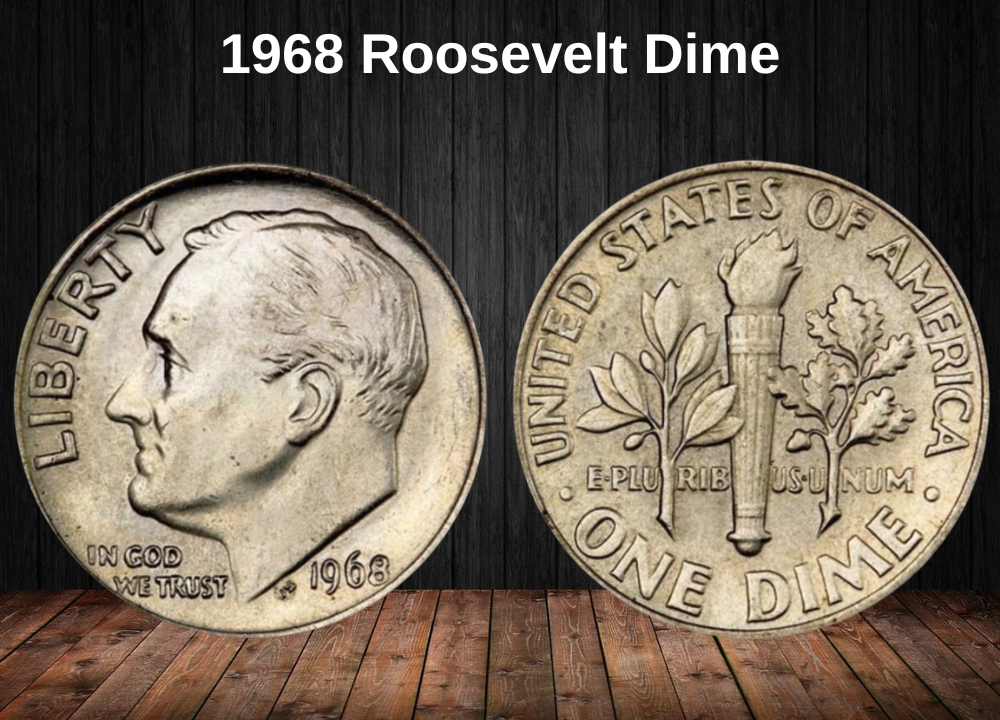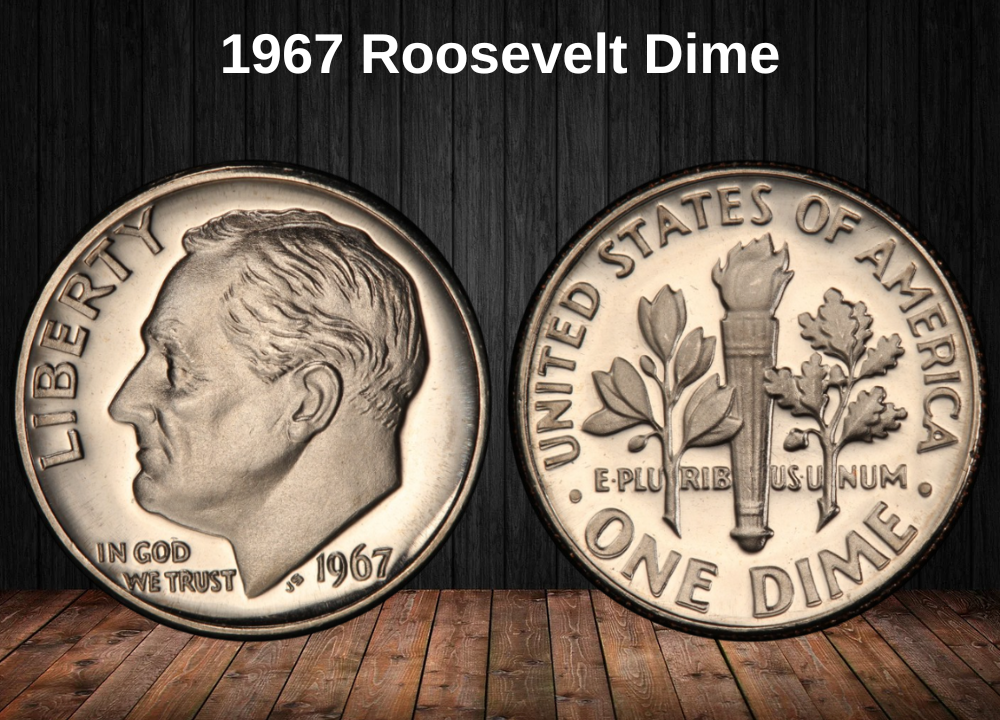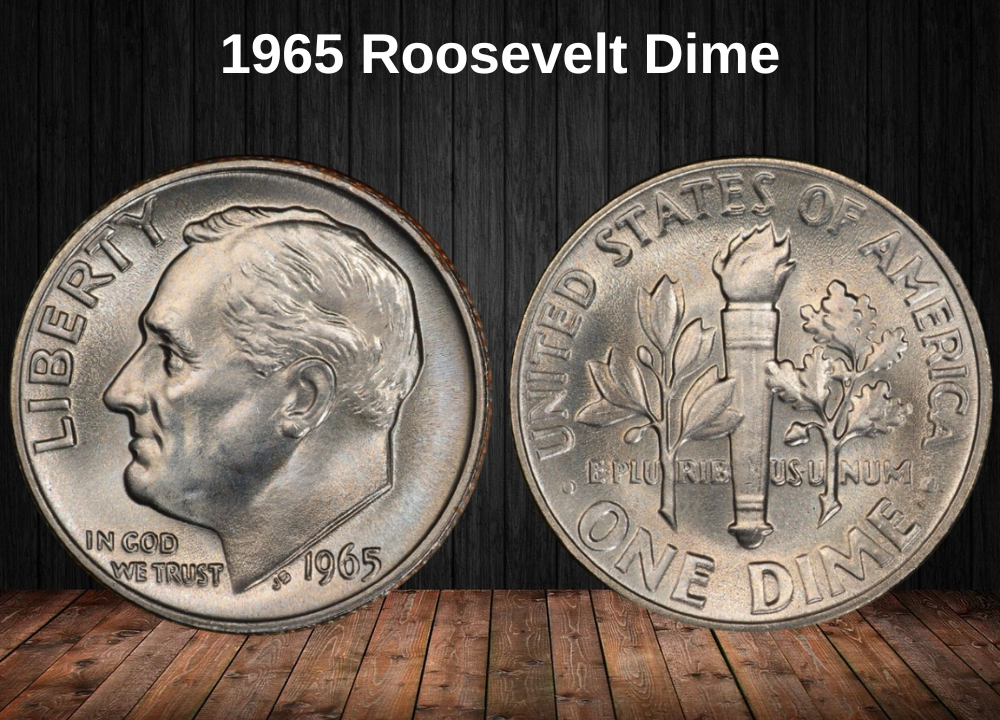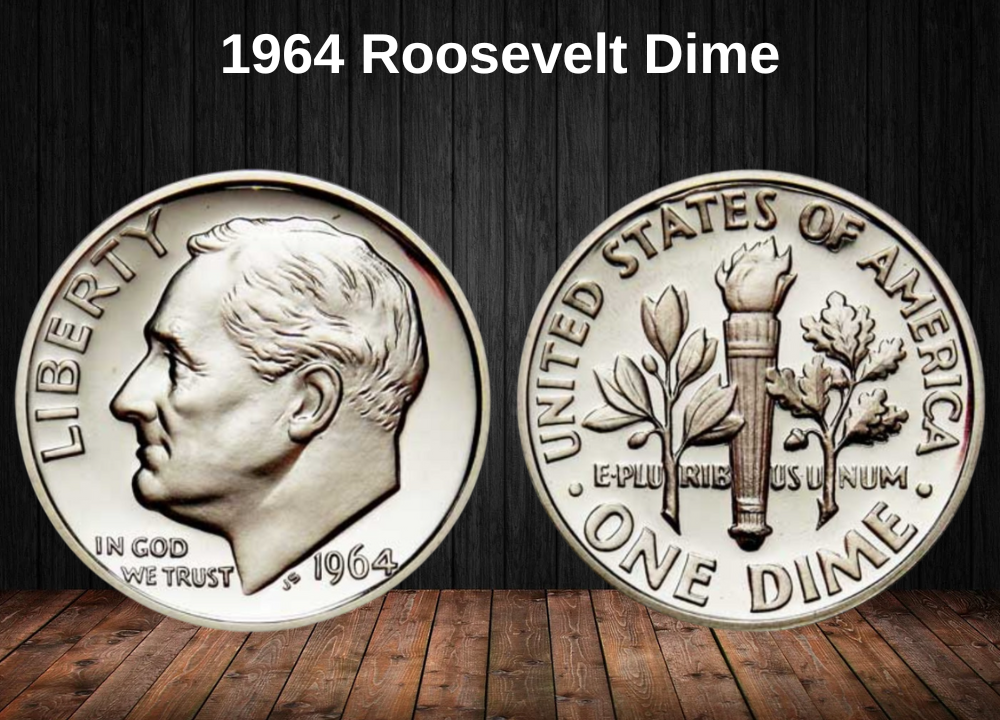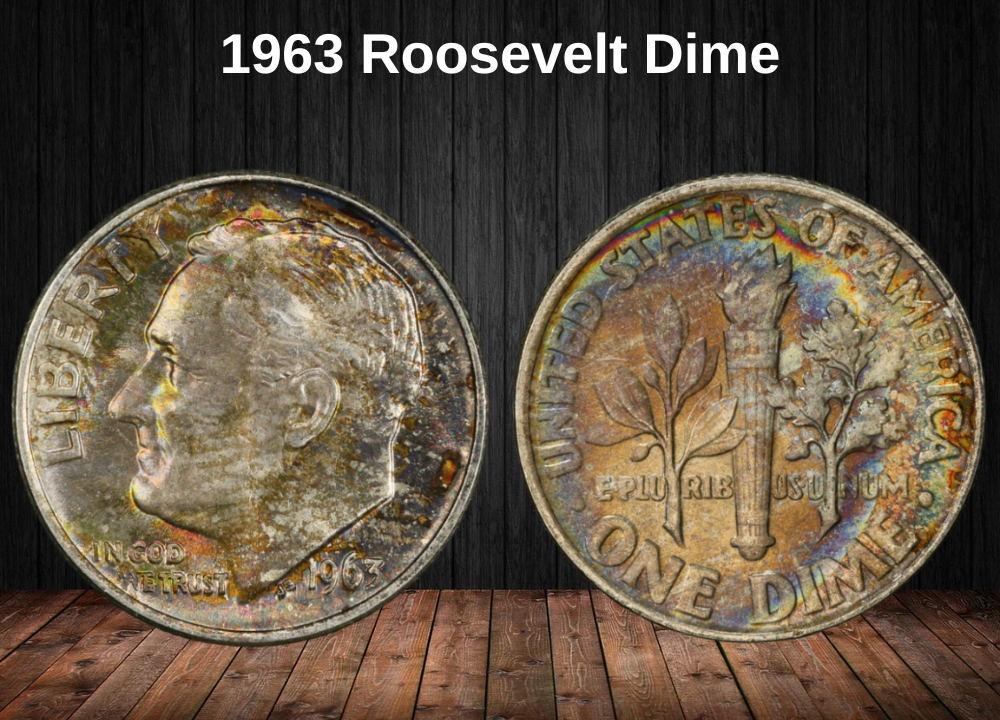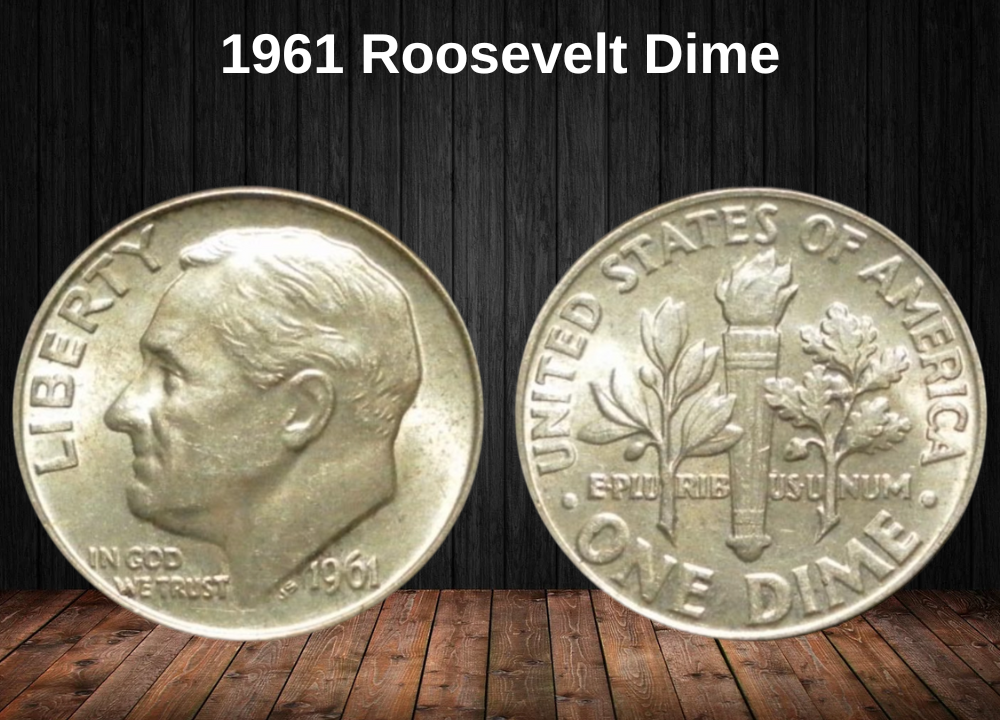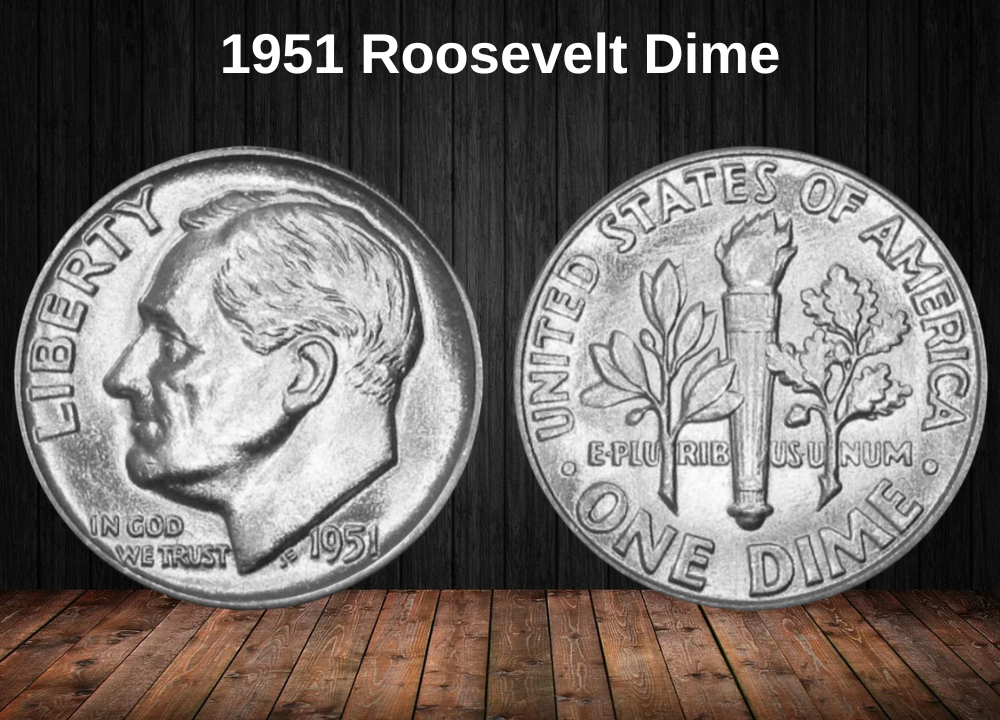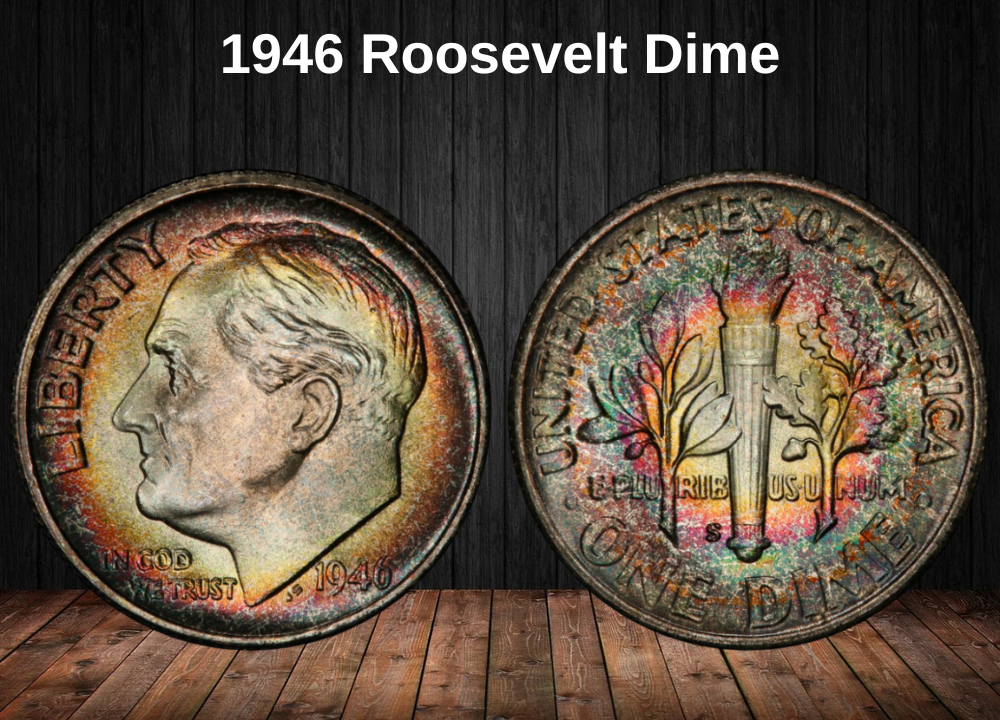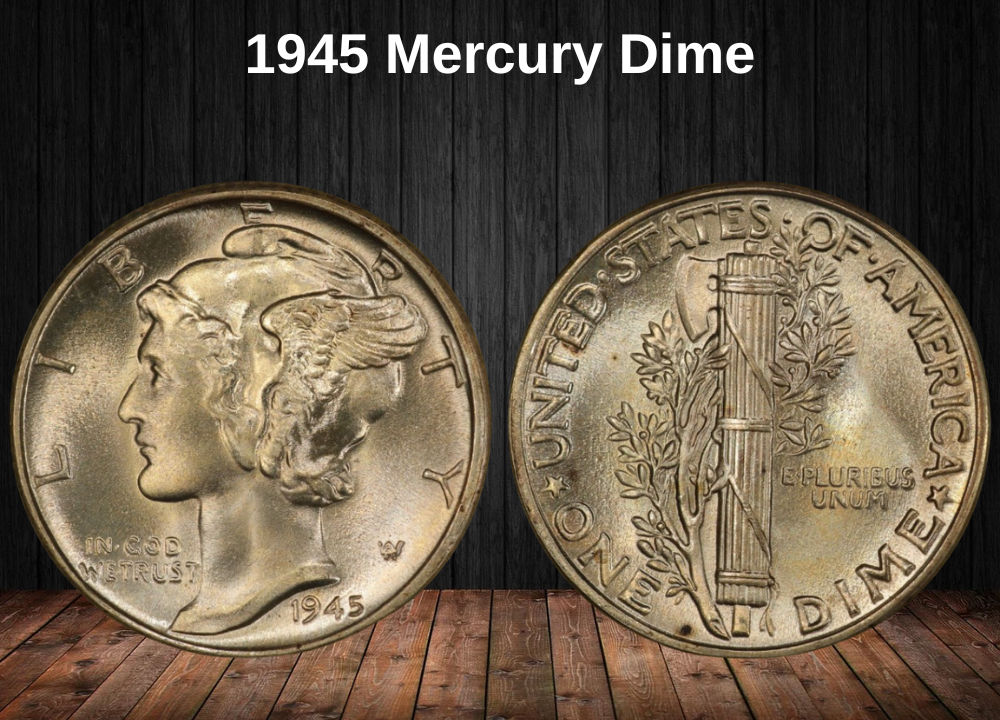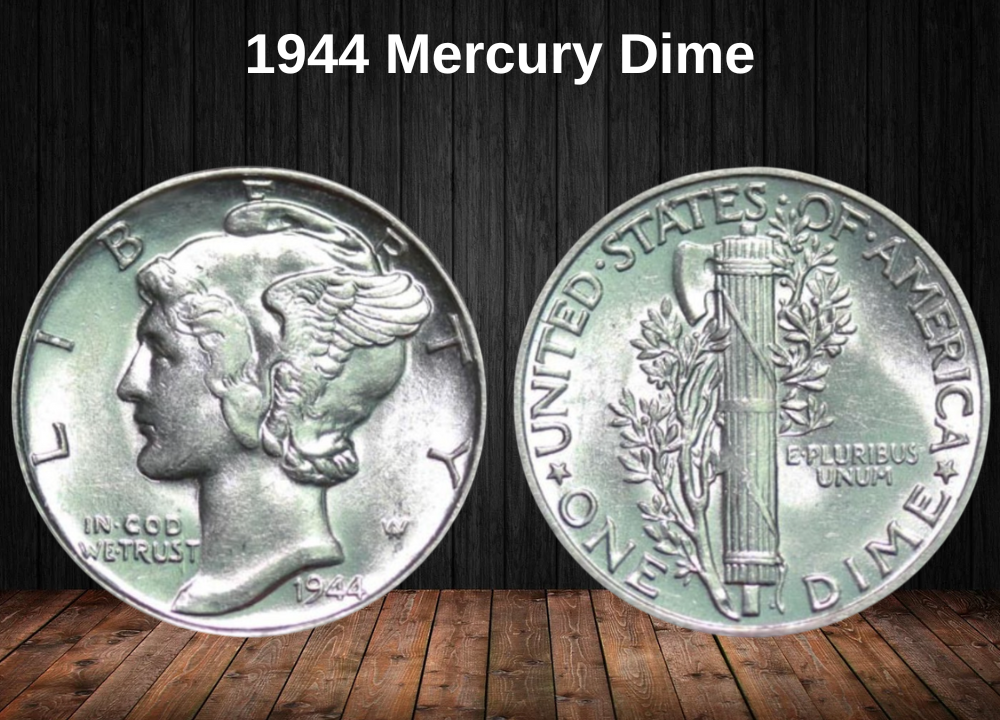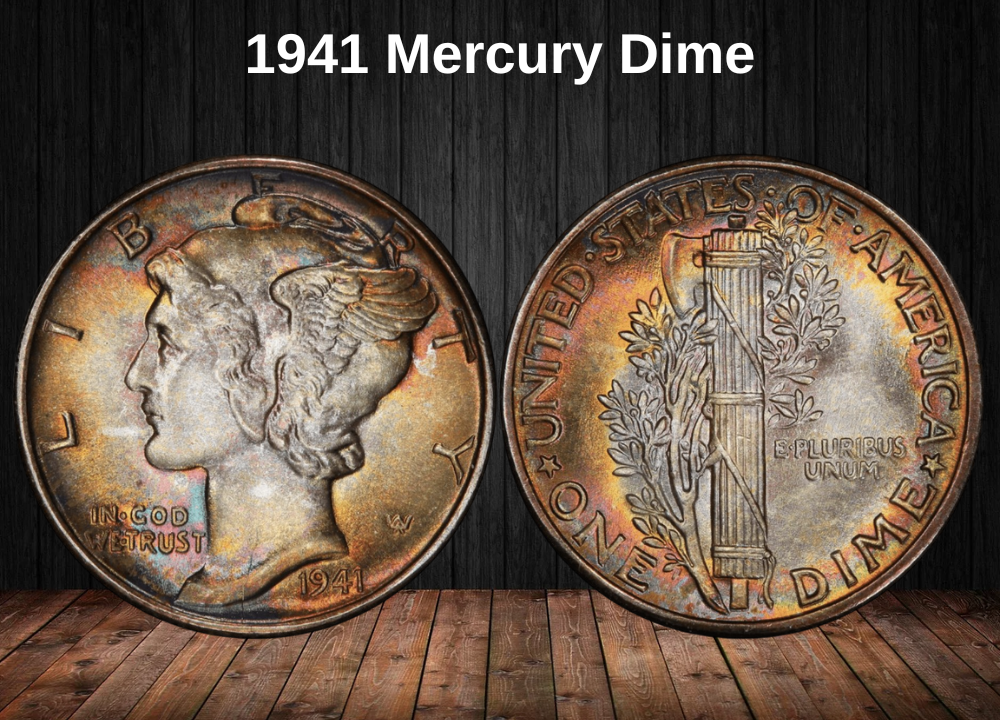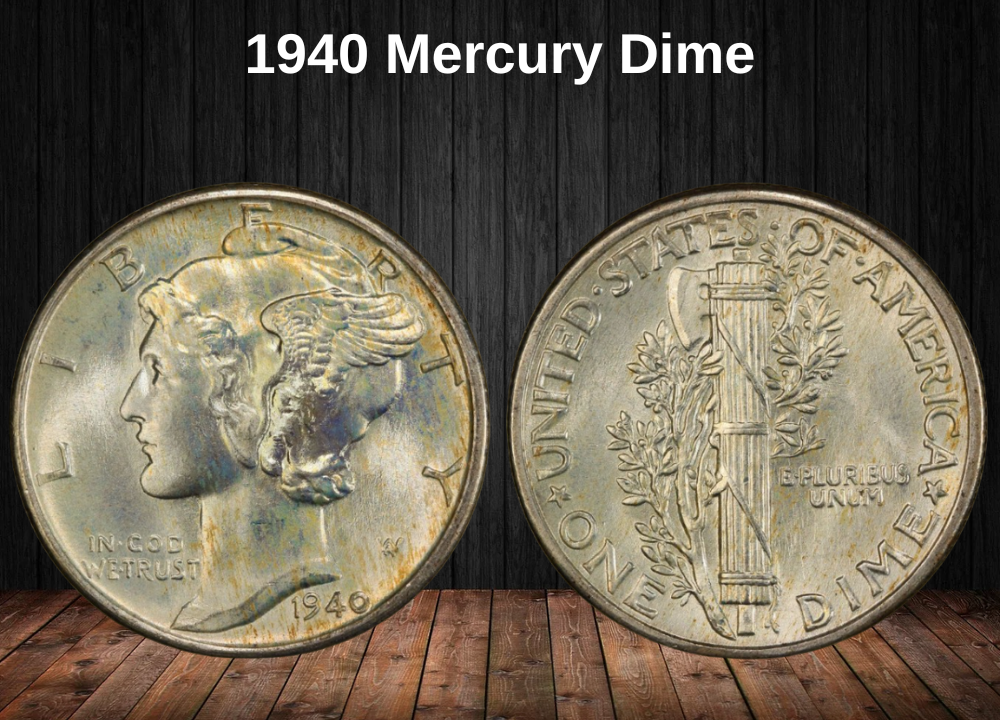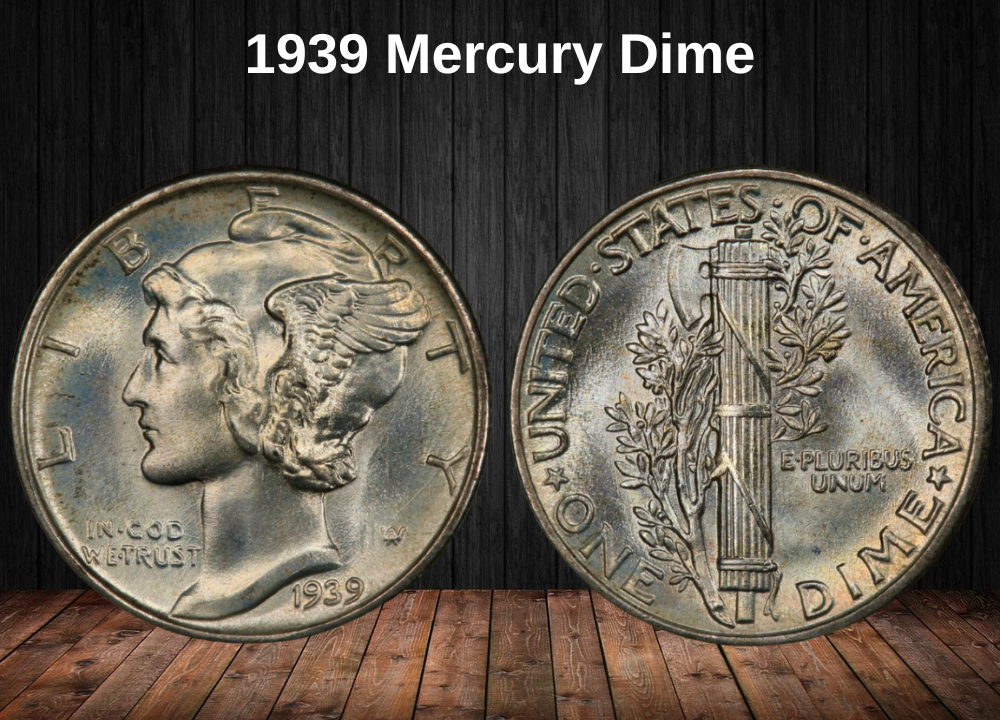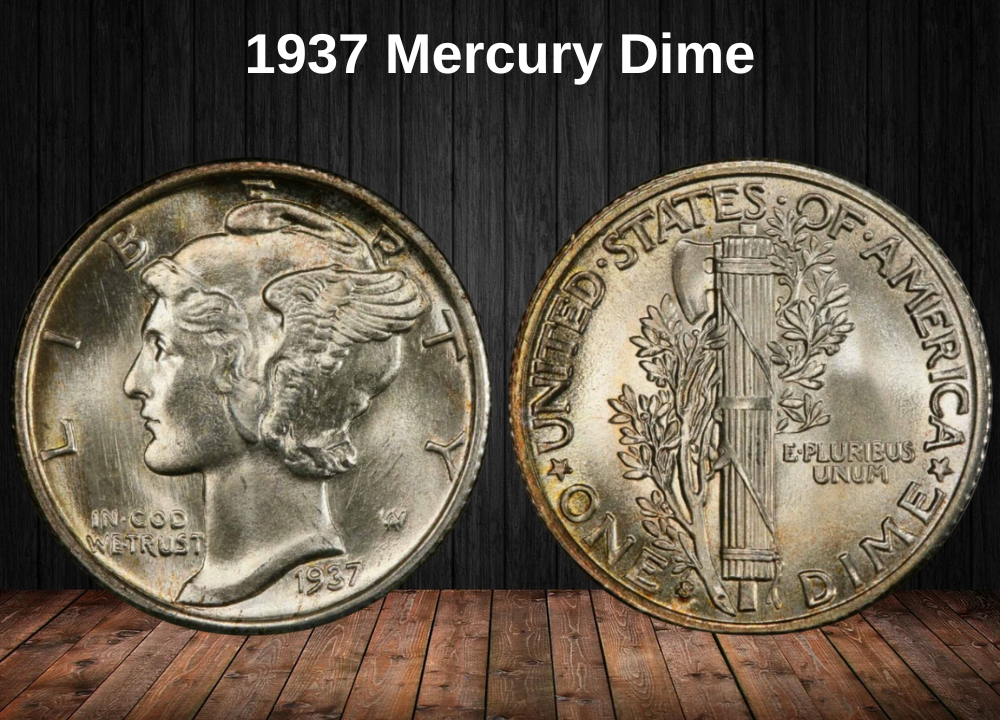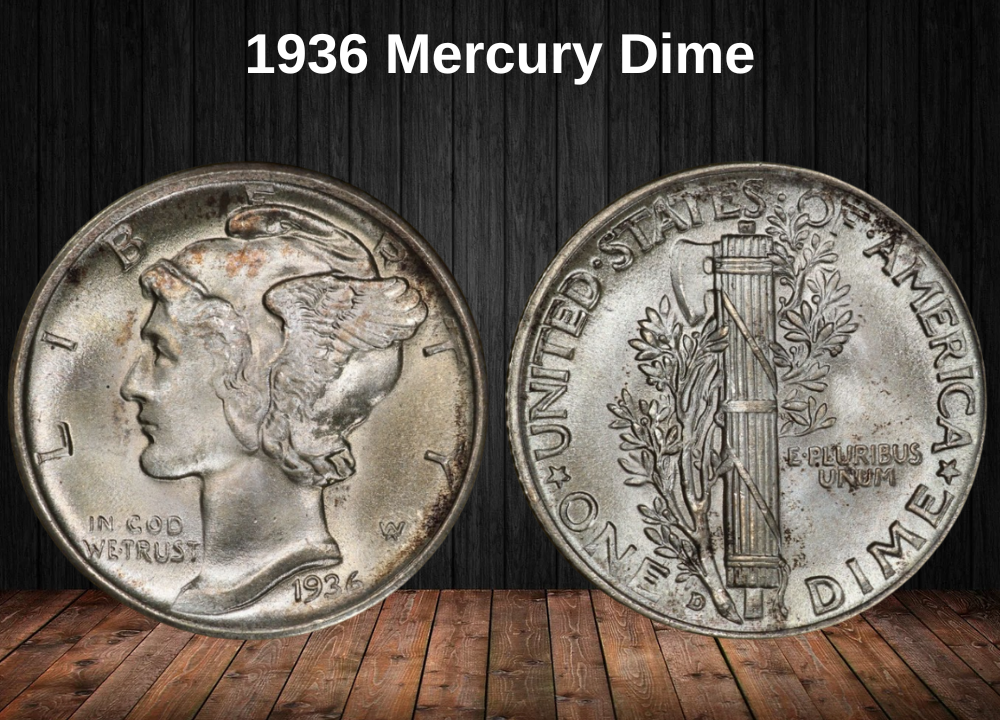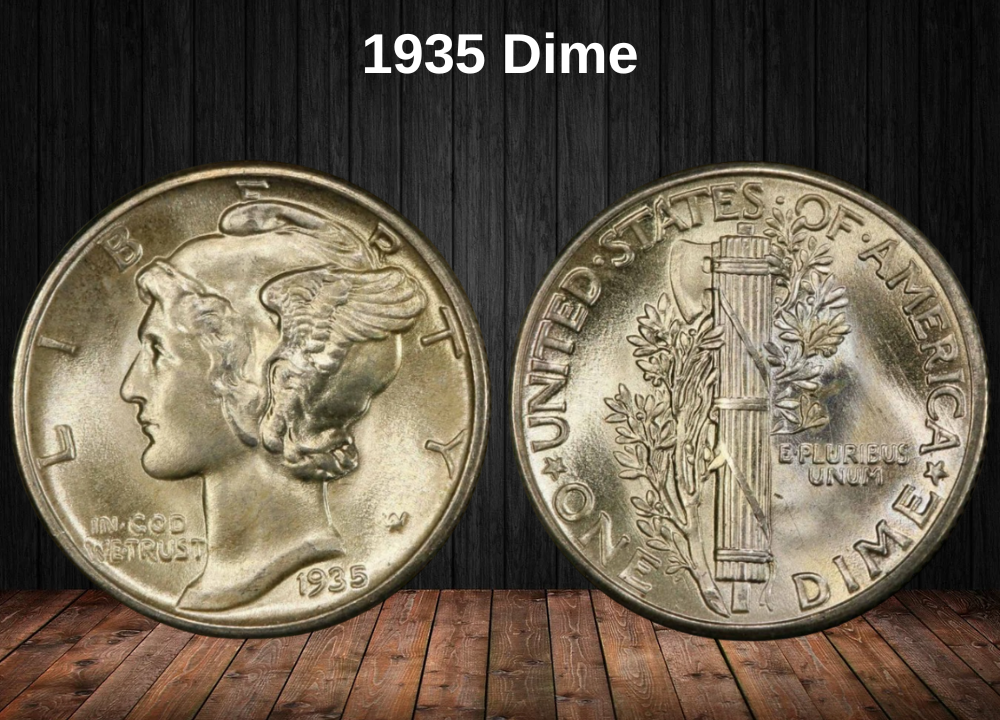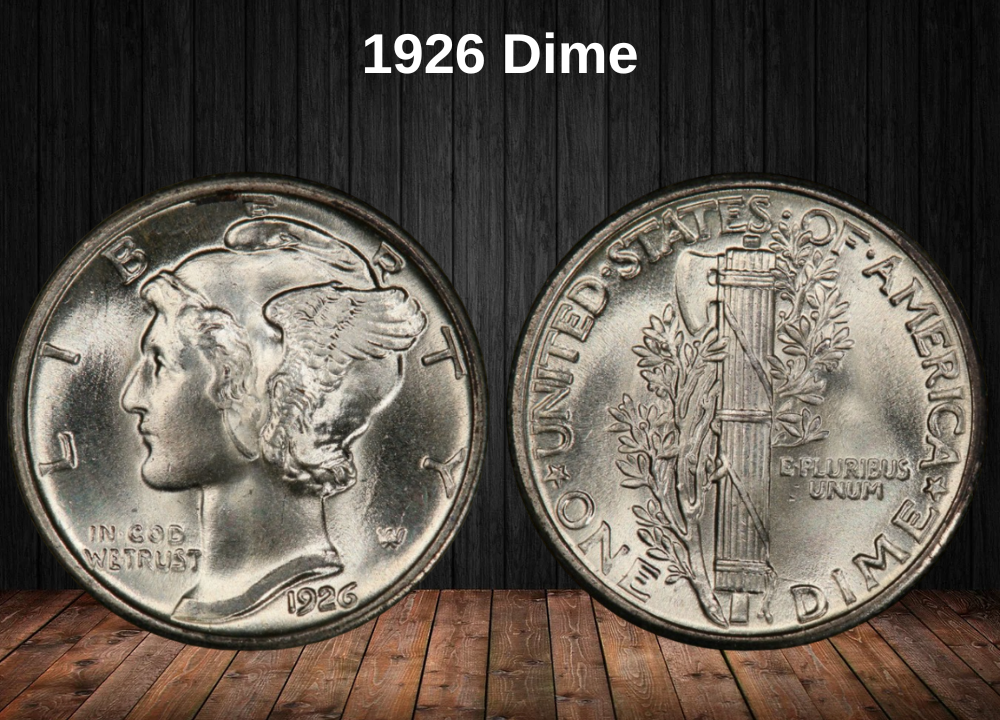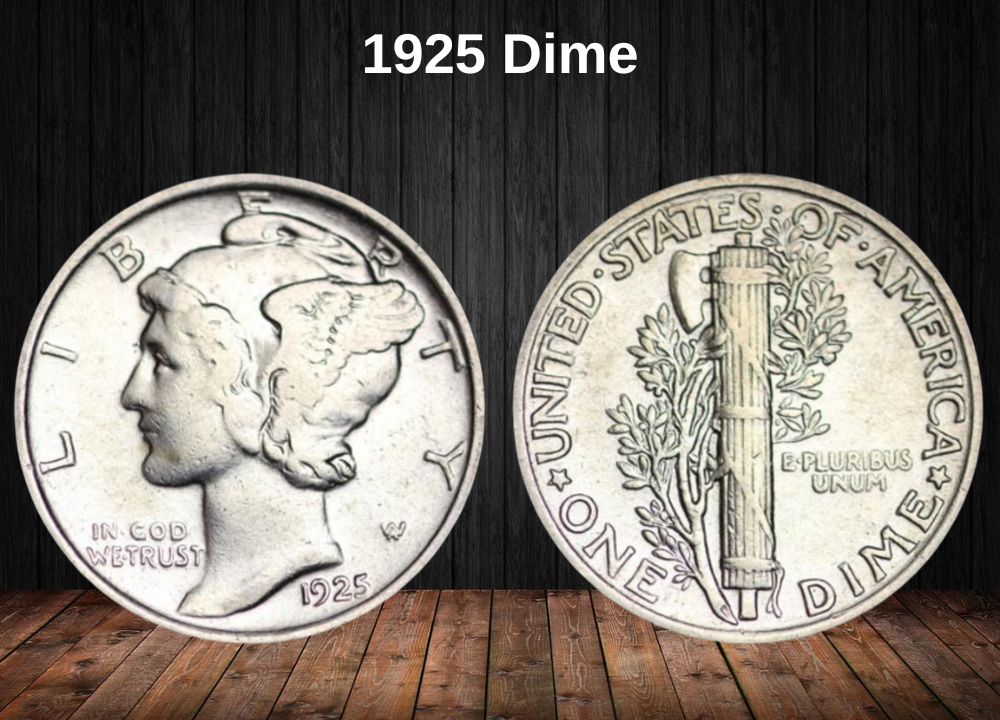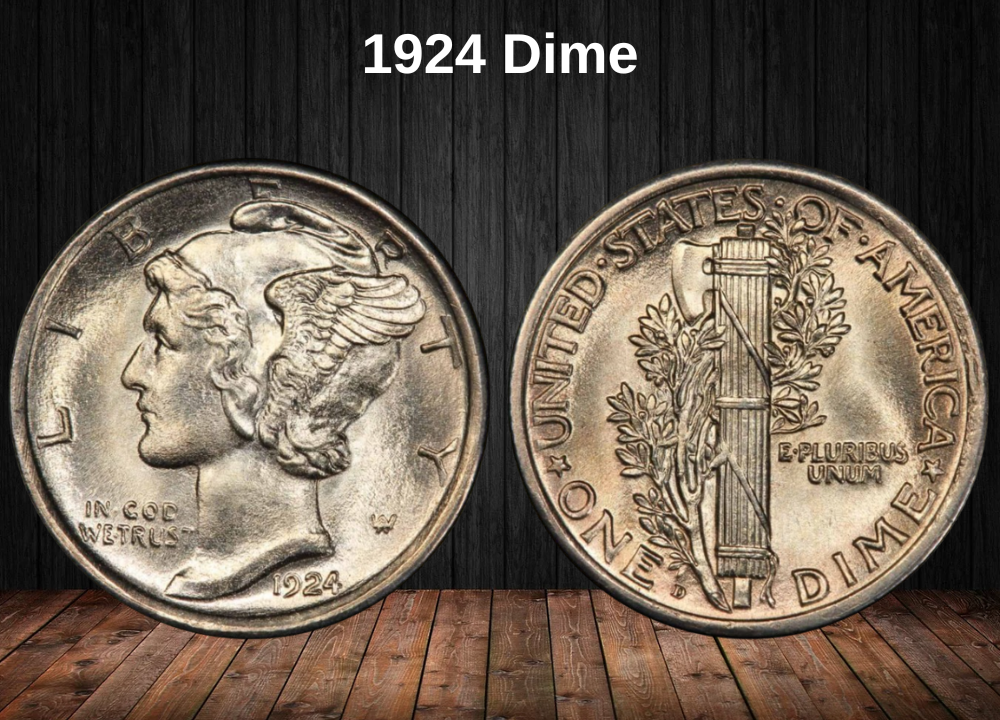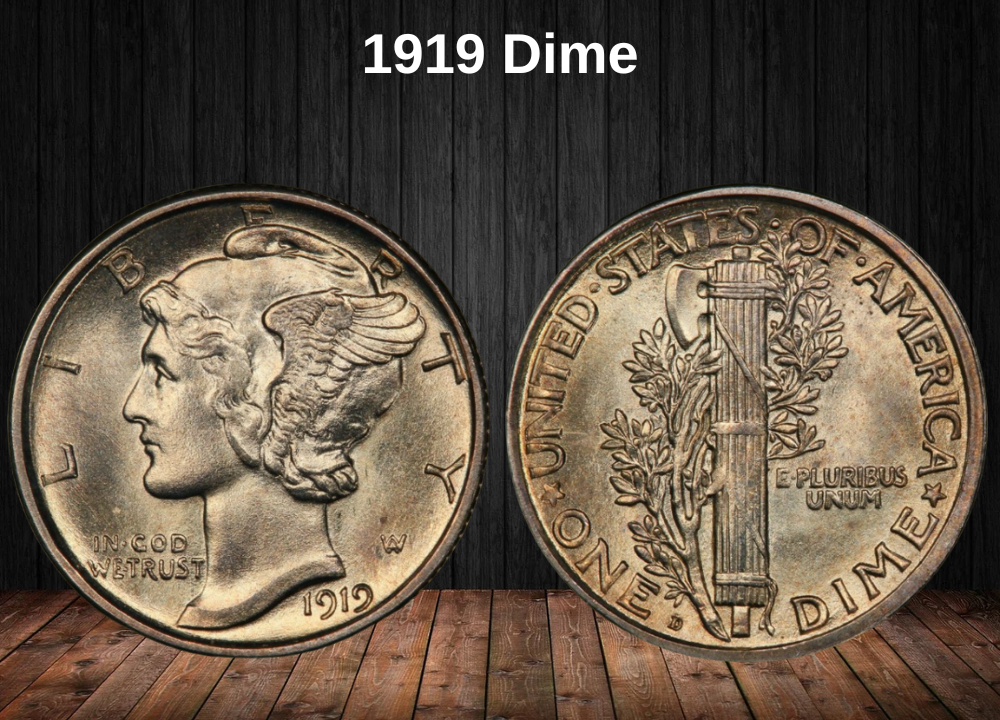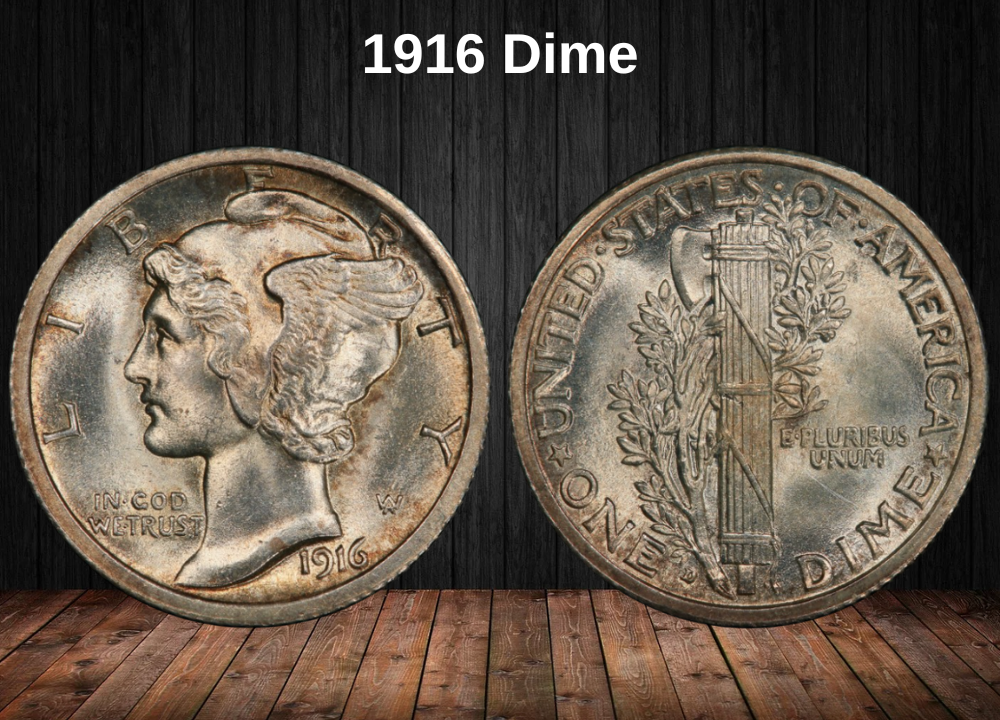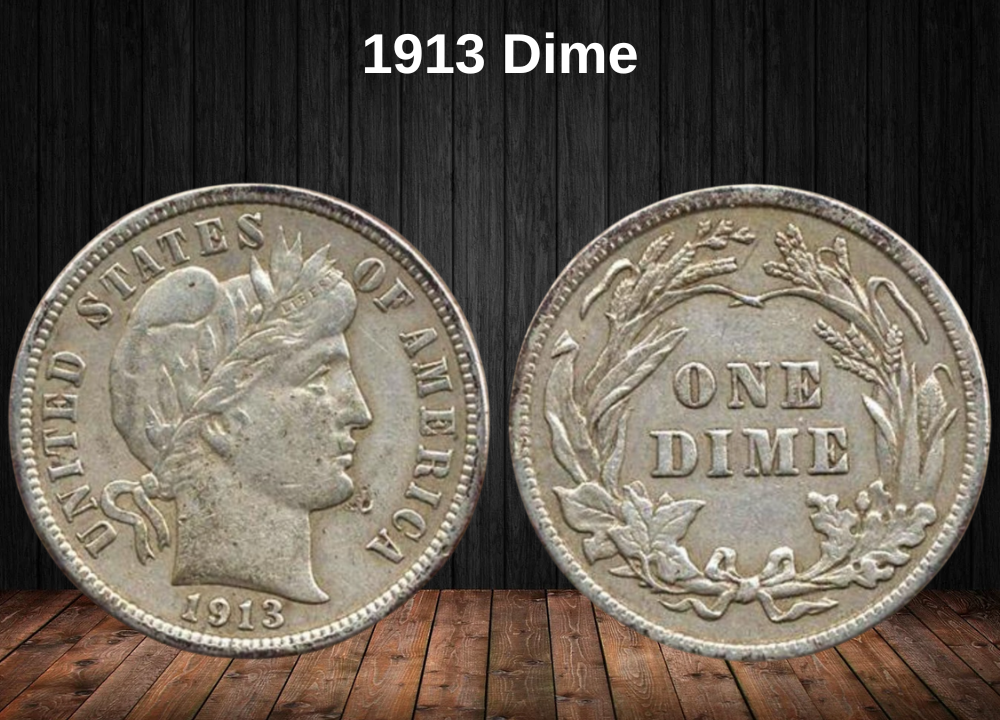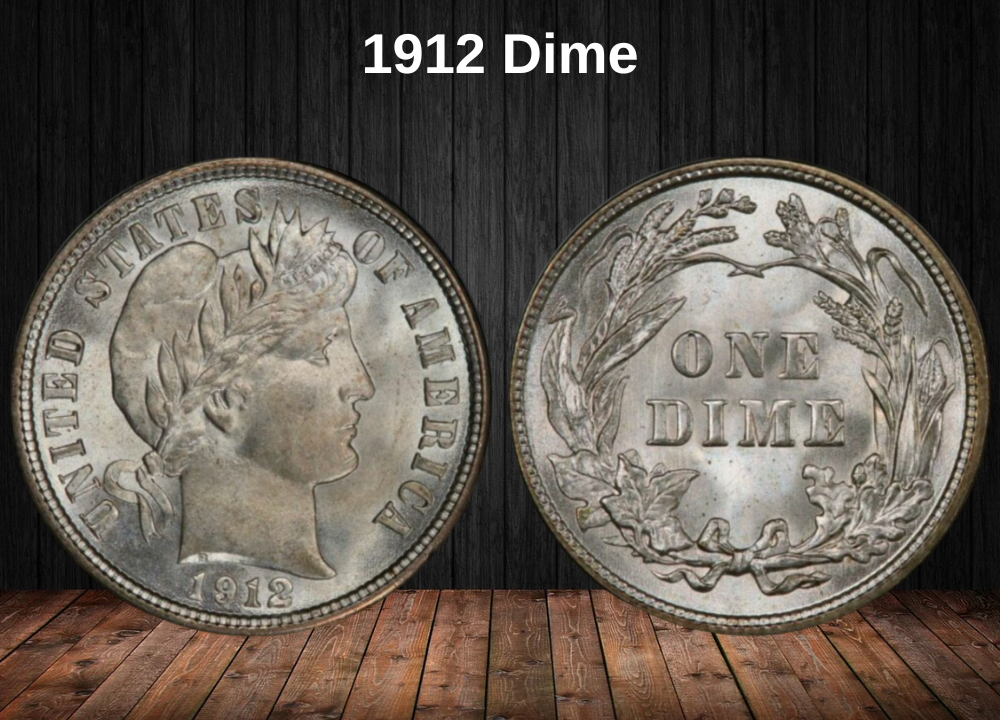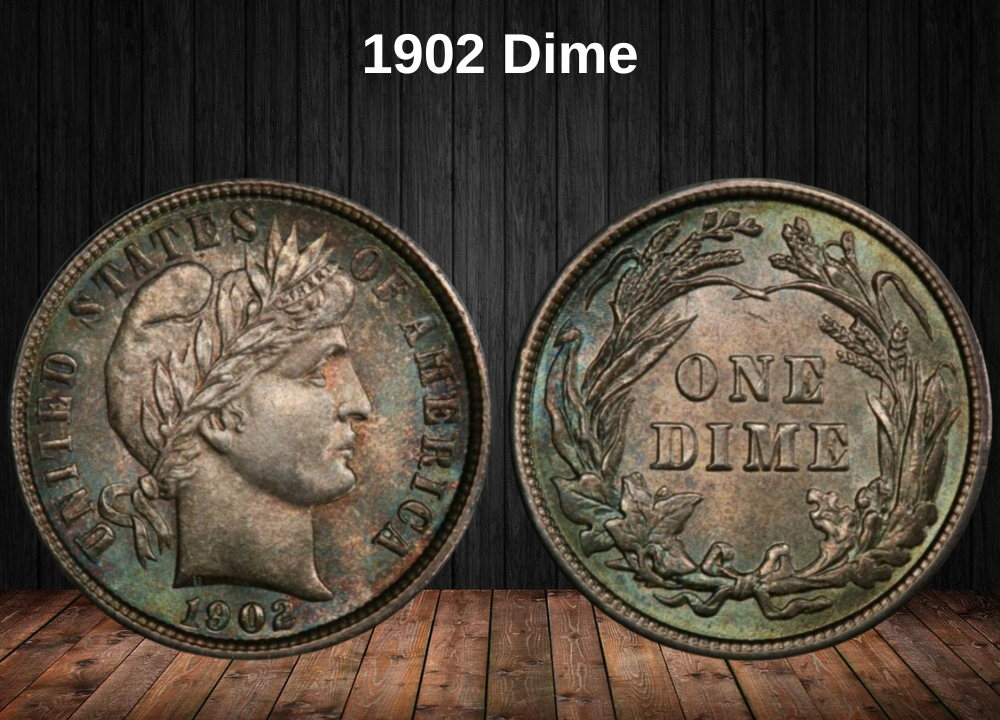1969 was a historic year in the U.S., marked by cultural, political, and technological milestones. For coin collectors, it also produced an interesting set of Roosevelt dimes, with some pieces commanding impressive premiums depending on condition, strike quality, and mint mark.
1969 Dime Value Chart
| Coin Type | MS 64 | MS 65 | MS 66 | MS 67 | MS 68 | PR/PF 69 DCAM |
|---|---|---|---|---|---|---|
| 1969 No Mint Mark Dime | $12 | $24 | $65 | $250 | – | – |
| 1969 No Mint Mark Dime (Full Bands) | $115 | $350 | $1,000 | $2,600 | – | – |
| 1969-D Dime | $6 | $7 | $12 | $25 | $700 | – |
| 1969-D Dime (Full Bands) | $24 | $55 | $200 | $625 | – | – |
| 1969-S Proof Dime | $3 | $4 | $5 | $6 | $7 | $12 |
History of the 1969 Roosevelt Dime
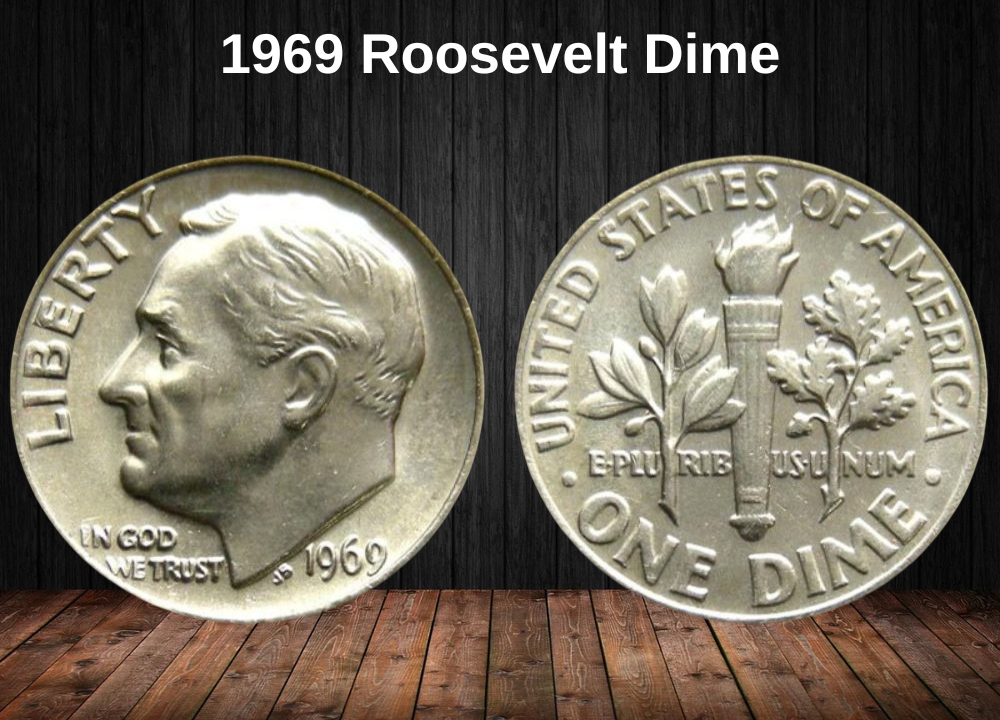
The Roosevelt Dime has an unusual place in U.S. coinage. Though it represents ten cents, it is actually the smallest coin in circulation, even smaller than the one-cent penny. This counterintuitive fact dates back to the 19th century, when coins were expected to hold their full melt value.
At that time, the denomination had to equal the market value of the precious metal inside the coin. Since silver was far more valuable than copper, ten cents of silver weighed much less than one cent of copper. That’s why the dime ended up being so tiny — and by law, its size was never changed, even after silver was removed from U.S. dimes in 1965.
Why the Dime Has Reeds on Its Edge
Early silver dimes were given reeded edges as an anti-theft measure. Unscrupulous people would sometimes shave or clip tiny amounts of silver from a coin, reducing its actual value. The reeded edges allowed merchants and citizens to quickly inspect whether a coin had been tampered with.
By 1965, however, silver was removed from circulating dimes because rising bullion prices meant their melt value exceeded their face value. The new “clad” dimes were struck from 91.67% copper and 8.33% nickel, a composition that preserved the silvery look without the costly silver content.
The 1969 Roosevelt dime falls within the first decade of these “clad” issues, making it historically important as one of the early examples of the modern dime that we still use today.
Franklin D. Roosevelt and the March of Dimes
The Roosevelt Dime was introduced in 1946, just one year after the death of President Franklin Delano Roosevelt (FDR). Roosevelt remains the only U.S. president to serve four terms, leading the country through both the Great Depression and most of World War II.
But the dime was chosen specifically to honor Roosevelt’s fight against polio, a disease that left him paralyzed from the waist down. In 1938, he helped establish the National Foundation for Infantile Paralysis, encouraging Americans to mail just one dime to support polio research. A popular radio host nicknamed the campaign the “March of Dimes,” a name that stuck and eventually became the official title of the foundation.
When Roosevelt passed away in April 1945, Congress fast-tracked the creation of the Roosevelt dime. It debuted on January 30, 1946 — what would have been FDR’s 64th birthday — symbolically aligning with the annual March of Dimes fundraiser.
Features of the 1969 Roosevelt Dime
Understanding the design and technical aspects of the 1969 Roosevelt Dime helps collectors appreciate its artistry and historical context. Below is a detailed breakdown of its obverse, reverse, and physical characteristics.
The Obverse of the 1969 Dime
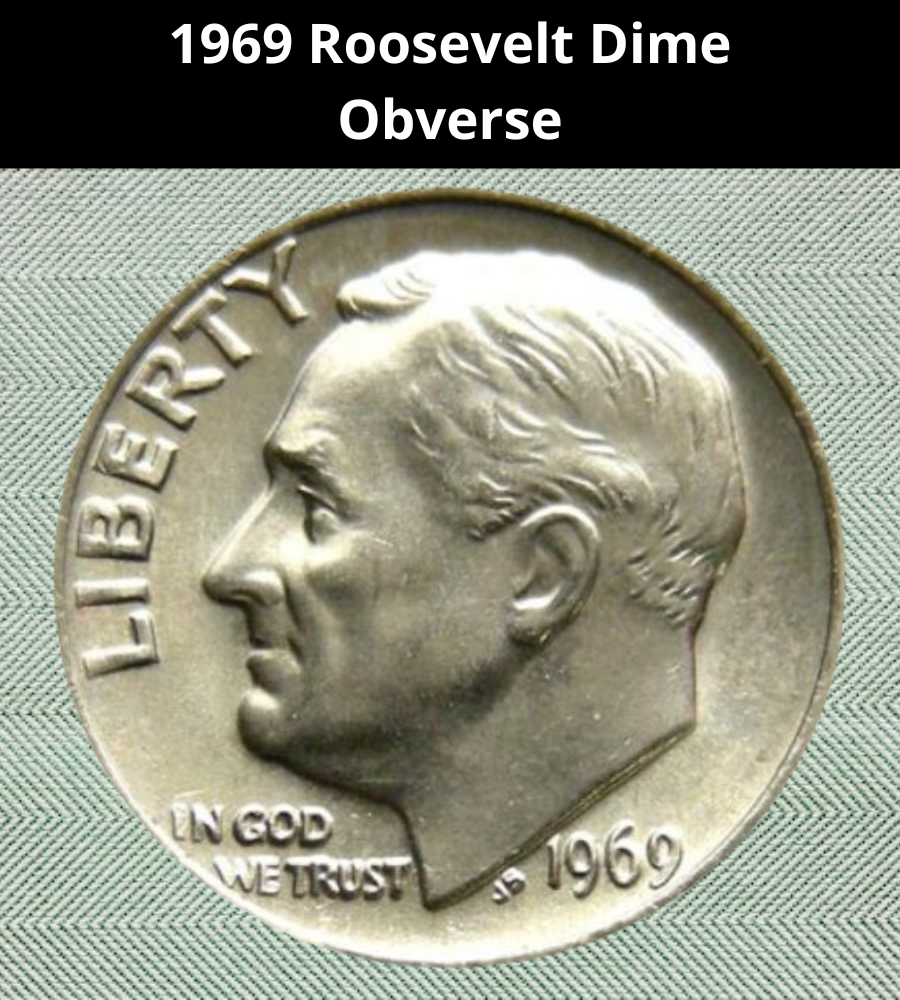
The obverse (front) features Franklin Delano Roosevelt, the 32nd President of the United States, facing left.
- The word LIBERTY appears in front of his face.
- The motto IN GOD WE TRUST is placed beneath his chin.
- The designer’s initials JS (for John Sinnock, Chief Mint Engraver) are found at the base of Roosevelt’s neck.
- The date (1969) and the mint mark (“D” for Denver, “S” for San Francisco, or none for Philadelphia) are placed just below the truncation of the neck.
Although Sinnock designed the coin, much of the work was completed by Gilroy Roberts, his assistant, due to Sinnock’s declining health.
The Reverse of the 1969 Dime
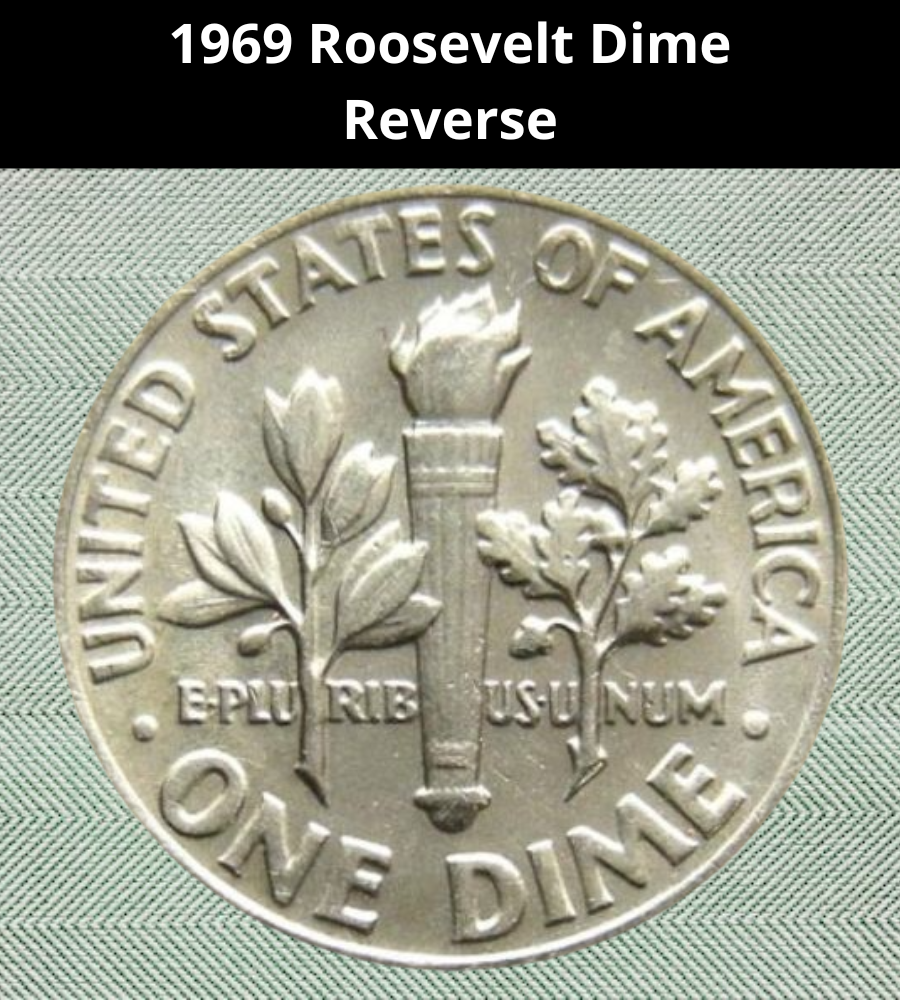
The reverse (back) highlights three symbolic devices:
- Olive branch (left): Symbol of peace.
- Torch (center): Represents liberty.
- Oak branch (right): Symbolizes strength and independence.
Across the central devices runs the motto E PLURIBUS UNUM (“Out of many, one”).
- The upper legend reads UNITED STATES OF AMERICA.
- The lower legend reads ONE DIME, with separating dots between the inscriptions.
Other Features of the 1969 Dime
- Diameter: 17.91 mm
- Thickness: 1.35 mm
- Weight: 2.268 grams
- Edge: Reeded with 118 reeds
- Composition: Copper core with a cupronickel (75% copper, 25% nickel) outer layer
- Designer: John R. Sinnock (credited), assisted by Gilroy Roberts
1969 Dime Grading Guides
| # | Grade |
|---|---|
| 1 | Basal State-1 |
| 2 | Fair |
| 3 | Very Fair |
| 4, 5, 6 | Good |
| 7, 8, 10 | Very Good |
| 12, 15 | Fine |
| 20, 30 | Very Fine |
| 40 | Extremely Fine |
| 50 | About Uncirculated |
| 60 | Mint State |
| 65 | Mint State |
| 70 | Mint State |
1969 Roosevelt Dime Value Guide
When first issued in 1969, each Roosevelt dime was worth its face value of 10 cents. However, condition, mint origin, and strike details (like Full Bands) now play a huge role in determining collectible value. Dimes were struck at three mints in 1969: Philadelphia (no mint mark), Denver (“D”), and San Francisco (“S” proofs).
Let’s break them down:
1969 No Mint Mark Dime Value (Philadelphia)
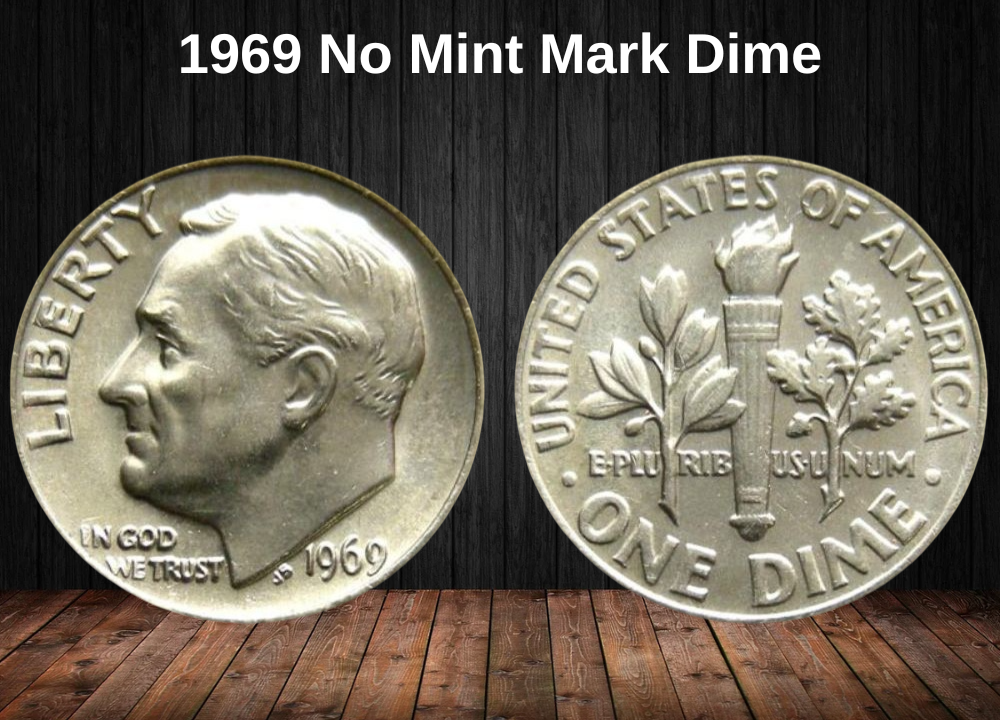
- Mintage: 145,790,000
- Key Sales:
- An MS 67 sold for $1,495 in August 2021.
- Today (May 2025), with at least 13 certified at this grade, value has dropped to around $250.
- Full Bands (FB):
- An MS 66 FB fetched $176 in 2014; with only 6 known examples, it’s now valued at about $1,000.
- Two known MS 67 FBs exist, each worth approximately $2,600 in 2025.
Collector Tip: Philadelphia strikes are common in circulated grades, but gem FB examples are true condition rarities.
1969-D Dime Value (Denver)

- Mintage: 563,323,870 (largest of the year)
- Key Sales:
- An MS 64 once sold for $253 in 2006, but with over 100 graded, it’s now only about $6.
- The highest certified grade is MS 68, with just five known, worth around $700 in 2025.
- Full Bands (FB):
- An MS 67 FB sold for $999 on eBay in 2018.
- With 7 known examples, PCGS values them at about $625 today.
Collector Tip: Denver coins are extremely common, but top-pop FB examples command respectable premiums.
1969-S Proof Dime Value (San Francisco)
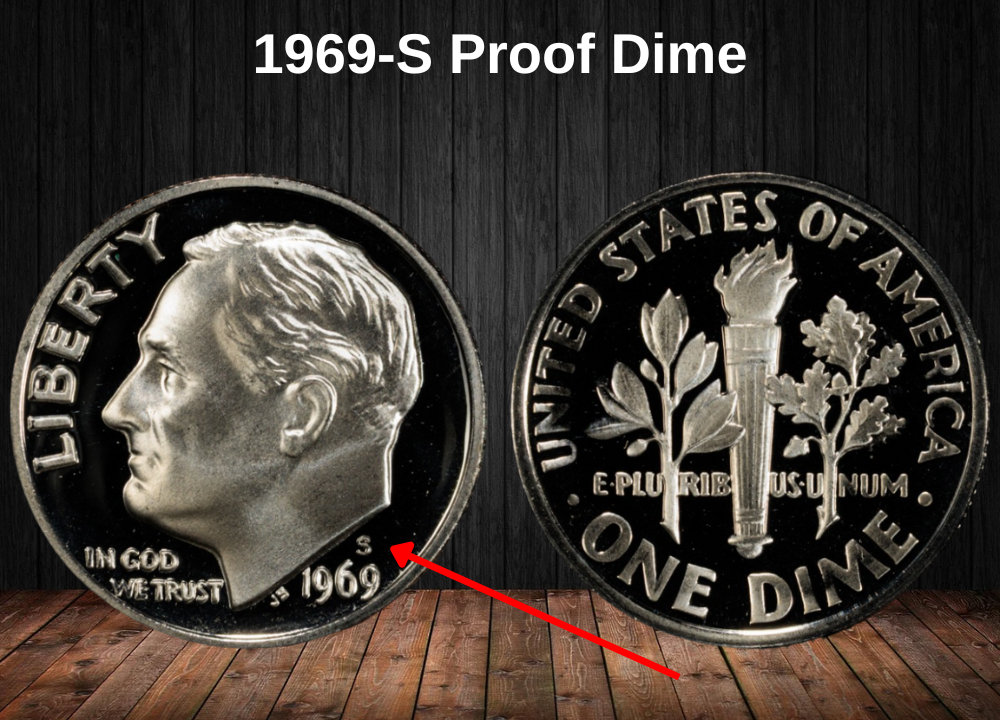
- Mintage: 2,934,631 (all proofs, with “S” mint mark)
- Production Quality:
- Proof blanks were polished with stainless steel balls, dies frosted with acid, and fields treated with horsehair for mirror finishes.
- Early strikes had strong frosted devices and deep mirrors (Deep Cameo), while later strikes gradually lost this contrast.
- Key Sales:
- A PR 67 sold for $104 in May 2017.
- A PR 67 CAM brought $82 in 2016.
- A PR 69 DCAM realized $206 in 2009.
- Today, with 264+ graded PR 69 DCAM, they’re worth only about $110 (May 2025).
Collector Tip: Most 1969-S proofs are affordable, but Cameo and Deep Cameo examples remain the most desirable for specialists.
Rare 1969 Roosevelt Dime Errors List
Minting mistakes can turn an ordinary dime into a highly collectible piece. Many go unnoticed, but once discovered, they often bring premium prices at auctions and private sales. Here are the most notable 1969 Dime errors:
1969 Dime Reverse of ’68 – FS-901
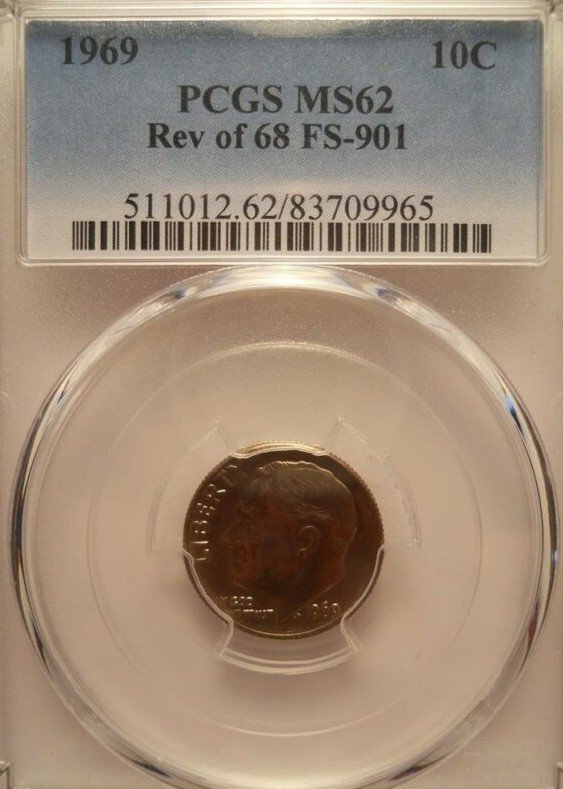
- Error: A 1969 obverse die was paired with a 1968 reverse die.
- Rarity: Not extremely rare, but popular among variety collectors.
- Sales:
- MS 64 sold on eBay for $340 (May 2019).
- PCGS has graded 11 examples, estimating them at $325 (Sept. 2023).
1969-D/D Dime RPM – FS-501
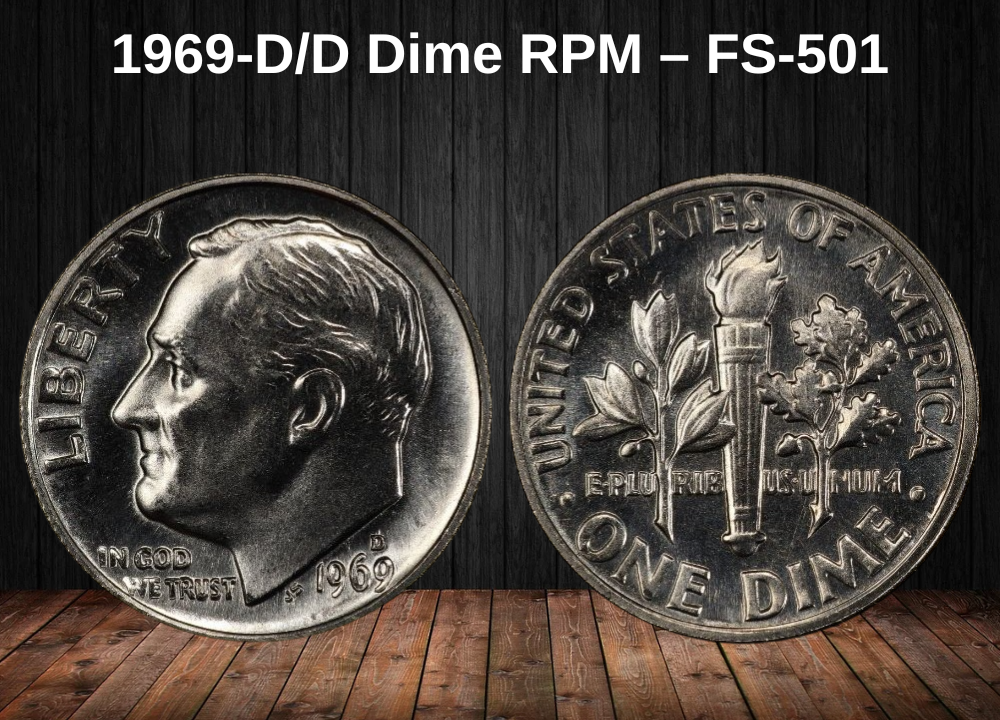
- Error: Re-punched mint mark (D over D). The die was struck more than once, leaving the earlier “D” partially visible.
- Sales:
- MS 67 sold for $300 (2019).
- MS 64 FB sold for $400 (2019).
- A classic RPM error that appeals to specialists.
1969-D Dime Missing Clad Layer (Reverse)
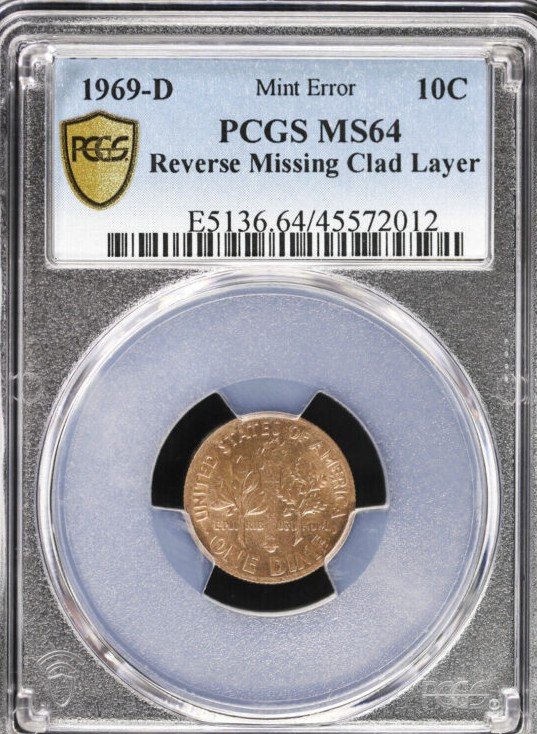
- Error: The reverse lost its cupronickel layer, exposing the copper core.
- Features:
- Obverse looks normal.
- Reverse appears coppery, like a penny.
- Reduced weight: about 1.9g instead of 2.268g.
- Sales:
- MS 61 sold for $75.
- MS 62 (1.86g) sold for $85.
1969-D Dime Missing Clad Layer (Obverse)

- Error: In this case, the obverse side lost its cupronickel plating.
- Weight: About 1.9g.
- Cause: Poor bonding of the planchet layers or die pressure stripping the cladding.
- Sale: MS 62 sold for $50.
1969-D Dime Obverse Clad Layer Only (Off-Center)
- Unique Error: Only the obverse cupronickel layer struck — no copper core or reverse.
- Appearance:
- Looks like a “double-headed” mirror image.
- Slightly misaligned strike.
- Sale: MS 65 sold for $430.
1969-D Dime Double Struck 90% Off-Center
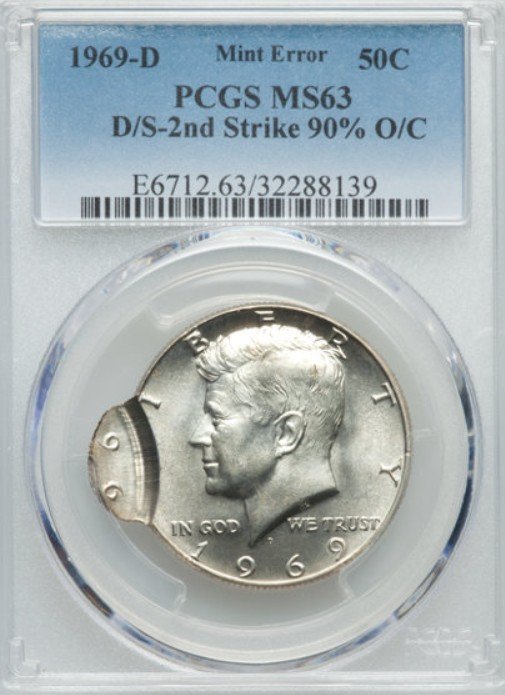
- Error: The coin was struck twice, the second strike being 90% off-center.
- Appearance: Incomplete and distorted design, a classic off-center double strike.
- Sale: AU 53 sold for $100.
Where to Sell Your Dime Coin?
Now that you know the value of your dime, the next step is deciding where to sell it. There are several trusted options—both online and in person—that can help you get the best price depending on your coin’s rarity and condition.
To see the full list of recommended places, along with their advantages and disadvantages, check our complete guide on where to sell your dime coins.
FAQ About the 1969 Roosevelt Dime
1. What is the 1969 Roosevelt Dime made of?
The 1969 dime is a clad coin with a pure copper core and an outer layer of 75% copper and 25% nickel. It weighs 2.268 grams, has a diameter of 17.91 mm, a thickness of 1.35 mm, and 118 reeds on the edge.
2. Where was the 1969 dime minted?
- Philadelphia – No mint mark
- Denver – “D” mint mark
- San Francisco – “S” mint mark (Proof coins only)
3. How many 1969 dimes were minted?
- Philadelphia (No mint mark): 145,790,000
- Denver (D): 563,323,870
- San Francisco (S Proof): 2,934,631
4. What is the design of the 1969 dime?
- Obverse (front): Profile of President Franklin D. Roosevelt facing left, with the words “LIBERTY”, “IN GOD WE TRUST”, and the date 1969. Designer initials JS (John Sinnock) are below Roosevelt’s neck.
- Reverse (back): Torch (liberty) in the center, with an olive branch (peace) to the left and an oak branch (strength) to the right. The inscriptions read “UNITED STATES OF AMERICA”, “E PLURIBUS UNUM”, and “ONE DIME.”
5. Are 1969 dimes silver?
No ❌. By 1969, Roosevelt dimes were no longer made of silver. All circulation strikes were clad copper-nickel coins. Only earlier dimes (before 1965) contained 90% silver.
6. Are 1969 dimes rare?
Most 1969 dimes are common in circulated condition and worth only face value (10 cents). However, higher-grade examples, Full Bands (FB) varieties, and error coins can be valuable.
7. What is the value of a 1969 dime?
- Circulated: 10¢ to 25¢
- Uncirculated (MS 65): $7–$25 depending on mint
- High grade MS 67–68: Hundreds of dollars
- Proof coins: $3–$12, with Deep Cameo (DCAM) worth more
- Errors/Varieties: $50–$400+ depending on type
8. What are the most valuable 1969 dime errors?
Some notable errors include:
- Reverse of ’68 (FS-901)
- Re-punched Mint Mark D/D (FS-501)
- Missing clad layer (obverse or reverse)
- Double strike or off-center strikes
These can bring anywhere from $100 to $400+ at auction.
9. Should I get my 1969 dime graded?
If your coin is:
- In high mint state (MS 66 or better)
- Has Full Bands (FB) on the torch
- Or has a visible mint error
👉 Then professional grading (PCGS/NGC) may significantly increase its value.
10. What’s the bottom line on 1969 Roosevelt dimes?
Most are only worth face value, but collectors pay premiums for high-grade, FB, and error varieties. Always check your 1969 dimes carefully — some can be worth hundreds or even thousands.


